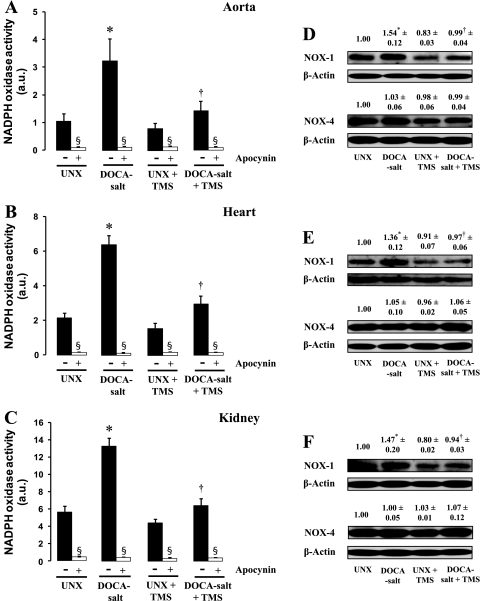Fig. 6.
TMS reduces the increase in NADPH oxidase activity and expression of NOX-1 associated with DOCA-salt-induced hypertension. A–C: effect of TMS treatment on NADPH oxidase activity in the aorta (A), heart (B), and kidney (C). NADPH oxidase activity was measured using lucigenin-enhanced chemiluminescence in the absence and presence of the NADPH oxidase inhibitor apocynin (100 μmol/l) (materials and methods). Luminescence was measured every minute for 10 min using a luminometer, and activity is expressed in arbitrary units. Data are means ± SE (n = 5). *P < 0.05, UNX vs. DOCA-salt. †P < 0.05, DOCA-salt vs. DOCA-salt + TMS. §P < 0.05, apocynin vs. corresponding treatment group. D–F: protein levels of NOX-1 and NOX-4 in the aorta (D), heart (E), and kidney (F) were determined by Western blot analysis as described in materials and methods (n = 3). Blots were probed with an anti-NOX-1 or anti-NOX-4 antibody. For confirmation of equal gel loading, membranes were reprobed with anti-β-actin antibody. Density of the bands was analyzed using ImageJ 1.42 software and is expressed as the ratio of NOX-1 or NOX-4 to β-actin protein.

